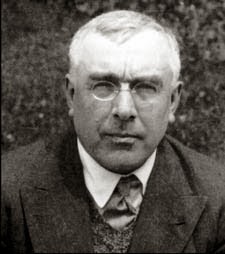 Ihave been asked many times whether or not being present and self-remembering are the same effort, so perhaps it’s a good idea to take a look at the various efforts we make and see how they are different and how they are the same.
Ihave been asked many times whether or not being present and self-remembering are the same effort, so perhaps it’s a good idea to take a look at the various efforts we make and see how they are different and how they are the same.
To begin with I would say that self-remembering and being present are not the same, but that they have the same purpose. When I try to self remember or to be present, essentially I’m trying to connect to higher centers. Higher centers have different aspects, and the efforts we make to awaken high centers can focus on one aspect or another. With being present, we try to focus our attention on the moment because we know that when we are in a higher state, being aware of the passing moment is part of the experience. With self-remembering we try to remember the self because we know that when higher centers work, we see ourselves in a very vivid way.
Because it is inevitable that we will begin from different (psychological) places, we have different ways of arriving at higher centers. If I find, for instance, that I’m getting identified when I’m eating lunch, I might decide to focus my efforts on self-remembering. In this situation I’m not concerned with the past or the future, so calling it being present doesn’t have the right flavor or as Ouspensky says ‘taste.’ The problem is that I have forgotten, I have forgotten the self. So, for me, the most efficient way to become emotional about making an effort in that moment is to think about it as self-remembering. On the other hand, if I am having lunch and I am anxious because I have to go to the dentist in the afternoon, then I will probably want to think in terms of being present. In this case my focus will be on staying in the present and on not letting my thoughts stray into the future. We have various efforts because some efforts work better than others in specific situations.
Part of what we are doing in choosing one effort over another is attempting to bring emotion to the effort we are making. Emotion is needed to drive our efforts. Another way of thinking about how we choose one effort over another is by looking for the weakness of the moment. Let’s say that you fall in love. Now when you are with the person you love, you will probably have no trouble being in the moment. You will want to be with the person, after all you are in love. But you will probably find that you are easily identified, and so, in this case, you will want to observe your identification and make efforts to not identify. On the other hand, when you are separated from the man or woman you love, you may find that your thoughts stray into memories of the last time you were with them or into imagination about the next time you will see them. In these moments, being present is the right effort because the weakness of the moment is that you keep being drawn into the past or the future.
Here are nine efforts that I have used extensively over the years:
Self-Observation. When we speak about self-observation, we are usually talking about observing something specific in our inner world. For instance we can try to observe a feature (a weakness) in personality like willfulness or vanity or greed. This is generally done in order to understand how these features keep us from experiencing higher centers. We can also, for example, try to observe our movements to see if we are losing energy through tension or through using unnecessary force. Self-observation is particularly necessary at the beginning of work on oneself. At first, for instance, it is not clear which manifestations are from essence and which are from false personality. In other words we can mistake a weakness for a strength because we don’t know our type, our center of gravity, and we haven’t yet accumulated enough observations about lower centers.
Being Present. Being present is an attempt to hold your attention in the present moment, while keeping all thoughts about the past and the future at bay. You see and listen to what is around you and keep your concentration on that. You realize, ‘I am here, in this moment.’ Put simply being present is an effort to observe yourself in the passing moment.
Self-Remembering. Here the emphasis is on remembering, you are remembering to make the effort to create the self, which is normally absent. Self-remembering should always contain a sense of ‘I am here in this place.’ You observe yourself, but you also observe the place where you happen to be.
Not Identifying. The best way to think about identification is in relation to attention. With identification attention is drawn by the object of one’s attention. What is generally thought of as fascination can be seen as more extreme identification. If you sit in a movie theater and become lost in the picture, you are identified. Not identifying in that moment means remembering that you are sitting in your seat watching the film. In a sense not identifying is an attempt to find an objective or detached place from which you can remember yourself.
Divided Attention. This is where we focus on our ability to keep our attention divided between ourselves (our inner world) and what we are observing or doing. At a museum I may divide my attention by looking at a painting and, at the same time, realize that I am looking at it.
Separating. I generally only think of separating when I find myself in an unpleasant situation. If I burn my hand, I can try to separate from the pain. I can try to realize: here is my hand and here is my higher self; they are different. I separate from my hand (or my thoughts or my emotions) by holding the realization that I am not my hand (or my thoughts or emotions).
External Consideration. External consideration is opposed to internal (or inner) consideration. Inner considering is a particular type of worrying about what people think of you, whether they like or respect you, or whether they give you enough attention. When you are lost in inner considering, your concern is whether or not other people are attentive to you. Put simply external consideration is divided attention in relation to other people. Instead of becoming upset that others are not attentive to you, you give your attention to them. You listen and see them in front of you, and at the same time keep a part of your attention on the fact that you are there in that moment seeing and listening to them.
Bringing Scale. This is effort to try and enlarge your view of a situation. If a friend insults you and you become angry and want to yell at them, you can bring scale to the situation by trying to see the long body your friendship, or by remembering that you both are going to die. A fair portion of our unhappiness and negativity is the result not seeing the larger picture in our interactions. One of my favorite phrases for bringing scale to a difficult situation is ‘This too will pass.’
Stopping Thoughts. Ouspensky talked about stopping thoughts long before Carlos Castaneda popularized the idea—he called it stopping the internal dialogue—in the 1970s. The idea here is that if we can keep our thoughts down for a period of time, it opens up a space in our inner world, which can be filled, if we are persistent and lucky, by higher centers. I like to use the exercise when I am listening to music or listening to someone speak or when I walk.
Of course, all these exercises will all seem meaningless if you do not understand the principle that there are parts of each of us (higher centers) that we don’t use and with the right kind of effort these higher parts begin to function. A right effort, in this sense, is when we take an aspect or a quality of higher centers, like being present or continually remembering the self, and attempt, with attention, to hold this aspect in the forefront of our experience. Really each of these efforts is a description of holding some basic realization about yourself or the world in your consciousness. The words are not important and will change over time, and the nine exercises that I listed here are simply the ones that I have found to be the most universal. Right now being present is more fashionable than self-remembering, but being present is not inherently better or more effective than self-remembering. We go with what works, with what actually helps us reach higher centers.
Also, it must be said that it has been my experience that eventually all these efforts merge together, because the more we make efforts the more we can include in those efforts. Another way of looking at this is that eventually efforts can be made directly from higher centers. At first we try and fail and then succeed and then fail again, and even when we succeed, the higher states of consciousness we encounter are experienced as flashes. But later, when inner work becomes a way of life, our efforts become more focused on extending higher states than on bringing higher states. What this means is that we may not, for instance, need to make the effort to bring scale; because when higher centers function, a sense of scale is part of the experience. It is at this point that new kinds of practices and exercises become possible.











Thanks , William . I read your blog . Do you call it that ?
When it comes to expressing the Inner works , it can become challenging . All due to words , language
and the mind ( our beliefs , conditions , programs and what not that are constantly being filtered ! )
As you rightly expressed , in the end it all merges ! Thank you . Amar.
PS : I just jumped into Google+ and also doing some rumblings on Blogger . Share some thoughts with John Walz .
Thank you for the explanation. Again, it brings light to the differences we often forget.
I don’t want to be too much famous for the next generation of our lives
An excerpt from ‘The Fourth Way’ by Peter Ouspensky: “You cannot make effort to feel emotional, no effort will
help in that—but you can make efforts [to be present -CR] The question is how to produce emotion, how to make ourselves emotional. In our present state there is only one thing—effort [the effort to be present-CR]. But not effort to produce emotion. There is no such effort.”
Thanks for clarifying and sharing the fact of trying to be more emotional.
The effort to Be present needs to be the first Conscious effort; the realization ‘I am here now’ and conscious of it begins the Self remembering,
plus then remembering the filtering through of the moment by the five senses can then be the Bridge (or Essence) to our conscious Higher centers (the place of true emotionality).
Interesting comment.
As you may know the OG, Gurdjieff disagreed. You can make effort emotional by creating emotion as suffering and choosing to suffer voluntarily – you want to suffer as you ‘Know’ that conscious suffering is a blessing, it empowers your efforts elsewhere. When you get good at this you start to see suffering as Power to Do, and is the heart of most religions. Suffering eventually becomes pleasant, believe it or not.
How to do this? Don’t worry, no need for the hair shirt of Thomas Beckett or Opus Dei – listen to the Audio book ‘Women of the Rope’, a surprisingly excellent work (stick with it as the diary-style can wear thin). G tells his (famous) female followers to give up smoking for a while to do this. Coffee, alcohol sugar will work just as well. G taught the way of the ‘Sly Man’, a form of Zen, he did not worry about acquiring Knowledge, that was all Ouspensky.
Interesting, but you are trying to explain too much. You begin with a question and then try to answer. Much of what you are ‘explaining’ is basically ‘head’ material (one centered).
Perhaps you can give more practical material (sensation of the body for example) to be present. Two centers in one’s awareness and eventually when there is sufficient experience and the beginning of 3 centered possibility …then there can be the beginning of an effort of…a common presence.
A common presence is he beginning of the direction of the experience of having one’s own unique and individual … I AM…here and now. A state beyond the self satisfied work with only one or two centers. Much energy and humility required for this connection to higher centers…the rest is imagination and dreams. As G once said “one center by itself is hallucinating’ for a 3 centered being. ..need to go beyond 2 center work to have a ‘common presence’ with all 3 together in common …and permanent center of gravity.
Dear Friends,
For myself, the challenge is perhaps to avoid making yet another fictitious character that observes, the other fictitious aspects. By fictitious , I mean the reactive personae both known and unconscious.
The reactive energy constructs I observe, decompress under my gaze and expand into an unbearableness, physically felt, then dissipate, leaving a soreness behind that is seeded with an awareness which always distills down to a feeling of existential unworthiness, an etheric poison. Perhaps, for a time we prefer this veil to the radiant benevolence at the core which is neither human nor not human.
I see in these teaching the derivatives that came from it and the ancient origins it claims., the value power and mystery we ascribe to obscure pasts. Perhaps we are now being informed by a future we can’t yet imagine. Brook
lower your center of gravity to your solar plexus…
remember you have an inner-life…
feel your breathing… the inhale and the exhale
feel the blood running in your veins…
basil tilley (RIP), consistent comments… trevor square, london 1976-1979
Thank you for this important but brief explanation on the 4th way terms. Many blessings!
Thank you. Just what I needed this morning.
Nice post, clear and concise in a way that Ouspensky is not, much as his explanations of Gurdjieff’s Gnosis teachings are invaluable as a starting point – he made it accessible, Gurdjieff did not.
For me, it’s important to remember that Gurdjieff’s 4th way was defined as ‘Fragments of an Unknown Teaching’ – you must pick the bones out of it for yourself, as much of it won’t work for you out of the box.
Perhaps remember that all of this is an attempt to build your Being by conserving yourself, not waste yourself. Its always struck me as terribly ironic that Ouspensky’s teachings have a tendency to replace one type of waste of Being with another one – thinking about it. Indeed it’s actually worse in many ways, it becomes a seductive intellectual exercise, and leads to more waste of Being – it’s a negative feedback circle but it gives you something easy to Do, a ‘hobby’.
My advice, pick one thing from the above post and get VERY good at it, then wait for the next one of them ‘to happen’ to you – that’s how THE 4th way works, Zen. Using his language, the classic trap in this day and age is Identification to Associative Thinking to Imagination, usually driven by screens. Your whole life becomes this, so just try and break this cycle – use the inner door Zen way to break Identification (better ‘Attachment’) and focus on that. If you can break your State of Identification all else will ‘find you’, I promise you.
Ouspensky gives the vague impression you can start to do ALL of this at the beginning – you can’t, you need to build your Being. It’s not his fault as he does say the same, but his obsession with Knowledge, creating a catalog of Knowledge, driven via his infamous intellectual conceit was the undoing of him, and his relationship with Gurdjieff, don’t fall into the same trap. You MUST start with building Being NOT Knowledge, low level knowledge just wastes your Being even more – Gurdjieff (and Zen) were right.
Thank you for this article, William. I appreciate your clear, thorough expression of your understanding. As with previous articles read that you have written, I have new a .viewpoint to think about. With your writing and the artwork selections you make, I come away with finer energies circulating.
Thanks so much,
Sara Vernon